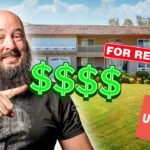Love it or hate it, the financial independence, retire early (FIRE) movement has changed the conversation around financial planning. And any change that provokes new discussion and a fresh perspective is a good change—even if you ultimately side with the traditionalists.
Today, I’ll convince you that you don’t actually need or even want to retire early. You want the freedom, flexibility, and intentionally designed life that financial independence offers.
The best part? You don’t even need to reach financial independence to achieve all that. Open your mind for a fresh way to look at FIRE.
The Traditional FIRE Goal
Financial independence in this context refers to being able to cover your living expenses with your investments alone—to make your day job optional, and to be able to retire if you like.
But here’s the thing: Reaching true financial independence (FI) takes a Iot of money. If you follow the 4% rule, you’d need $1 million just to generate $40,000 in annual income.
Actually, it’s worse than that. The 4% rule was only designed to keep your nest egg intact for 30 years. If you want to retire young, you’d probably have to withdraw just 3% to 3.5% of your nest egg each year, so a $1 million nest egg would only produce $30,000 to $35,000 per year.
Higher-yield real estate investments can help change the math, but the broader point remains: It takes years, and usually decades, to reach real financial independence. Even when you invest in group real estate investments targeting 15% to 25% annualized returns like I do, the math to become a millionaire is nothing to scoff at.
Reality Check: FIRE Never Looks Like the Posters
When people first learn the concept of FIRE, they imagine sipping margaritas on the beach for the rest of their days.
That doesn’t happen.
I’ve interviewed dozens of people who have reached financial independence and retired early. Every single one of them went back to work in some capacity or another.
Some start businesses, while others take positions with nonprofits. Still others write books or pursue artistic endeavors. The guy I used to consider the one exception just told me recently that he ran for city council president—and won.
No one retires at 40 and then spends the rest of their life doing nothing. It takes a self-motivated personality to achieve FI at a young age. As Jeremy Biberdorf from ModestMoney.com explains: “Giving up that productive drive is pretty tough. Reaching that retirement goal doesn’t just shut off that drive. That energy and desire to be productive need to go somewhere.”
Even many older retirees end up going back to work. Matt Brannon, who conducted Clever Real Estate’s 2024 Retirement Survey, puts it like this: “Our survey found that 25% of retirees are considering rejoining the workforce in some capacity. While some return to work because they need the income, others return to work simply out of boredom. Others might miss a strong sense of purpose that came with their former careers.”
The bottom line: Nearly every young retiree goes back to work, even if they take a year or two off first. And when they go back to work, they earn more money.
Why That’s Great News
When I first share that revelation with people pursuing FIRE, they usually find it disappointing. What’s the point of hustling and maintaining a high savings rate if you’re just going to go back to work?
That’s the wrong way of thinking about it.
First, people who reach financial independence start working on their own terms. They do work they love, that they’re passionate about, that brings meaning and purpose to every day. It’s a much better reason to get out of bed every morning than spending all day watching TV or drinking by the pool.
You pick your ideal work. You choose the hours you want to work and the location. It’s your show; you call the shots. “It’s a profound shift, no longer working because you have to, but because you want to,” shares Brian Meiggs, founder of My Millennial Guide. “It turns the concept of retirement on its head and opens the door to a more fulfilling and intentional way of living.”
Once you embrace the notion of work post-FIRE, your target numbers turn on their head as well. You don’t have to cover all your living expenses with passive income. You just need enough to cover any shortfall between what you want to spend and what your ideal work pays. If there’s a shortfall at all, and if there’s not, you should have changed careers long ago.
Start Living Your Ideal Life Within 12 Months
Imagine you currently spend $75,000 per year in living expenses. Your ideal work pays $60,000 per year, leaving you with a shortfall of $15,000.
Now, imagine you can reliably earn 10% returns on your real estate investments. And don’t tell me that’s impractical—in our Co-Investing Club, we literally just vetted a 10% note secured with a lien under 50% LTV, backed by both a corporate and personal guarantee from a highly successful investor. It’s absolutely possible for real estate investors with either experience or an investment club of like-minded people to reliably earn 10%.
In this example, you’d need to invest $150,000 to generate $15,000 per year. If you can invest $50,000 a year, it would take you three years to get there.
Or you could cut your living expenses by $10,000/year, so you’d only need another $5,000 in passive income to hit your goal. Then, it would only take you one year to ditch your day job and start living your ideal life.
I know: You have a hundred objections about why you can’t do it. You say it’s not safe, that the market could collapse, that this model doesn’t include any future savings rate.
For every objection, there’s a conversation to be had. Yes, the stock market can (and will) see corrections and even bear markets. This is why you shouldn’t be drawing down your stock portfolio before retirement and should only live on dividend income for now.
Sure, in the first year you quit your day job and switch to your dream work, you may not save any additional money toward retirement, but your income will inevitably grow over time. Besides, by this point you’ve probably reached “Coast FI” anyway.
Stop arguing about your limitations and start brainstorming your possibilities.
Come for the Early Retirement, Stay for Lifestyle Design
That picture in your mind of retiring early and relaxing on a beach with a cocktail? That’s what draws people to the FIRE movement in the first place.
But it’s just not what post-FIRE life looks like. It’s a myth—and that’s a great thing.
Stop dreaming about doing nothing and start dreaming about your ideal work and lifestyle. What kind of work do you dream about? Where would you live? What hours would you like to work? An intentional life by design is the goal, not becoming an alcoholic beach bum.
Start mapping out in vivid detail what your ideal life looks like. Then, map out the living expenses required, and you might be pleasantly surprised. If your ideal work lets you work from anywhere, do you really need to live in the expensive city or ZIP code where you live now? Do you really need two cars?
My wife and I enjoy free housing and full premium health coverage while living overseas, and we have no car. Our largest expenses are food and travel. Meanwhile, I get to work on my own terms as the owner of an online business (SparkRental). We’re not financially independent yet, but we still get to live our dream lifestyle.
You undoubtedly have your own ideal lifestyle that looks very different from mine. That’s awesome—now find a way to start living it through a combination of passive income, active income from your dream work, and lower living expenses.
Ready to succeed in real estate investing? Create a free BiggerPockets account to learn about investment strategies; ask questions and get answers from our community of +2 million members; connect with investor-friendly agents; and so much more.
Note By BiggerPockets: These are opinions written by the author and do not necessarily represent the opinions of BiggerPockets.









